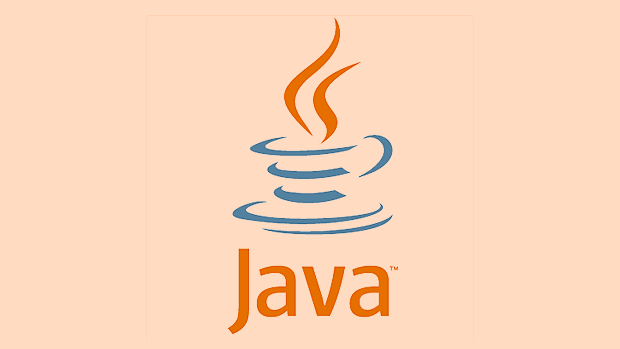Method hiding in Java occurs when a subclass defines a static method with the same name and parameters as a static method in its superclass. 1. It only applies to static methods, not instance methods. 2. The method call is determined by the reference type at compile time, not the object type at runtime. 3. Unlike overriding, it does not support runtime polymorphism. 4. It can be useful for changing class-level behavior across subclasses without instantiation. 5. Pitfalls include confusion with overriding and unexpected behavior if misused. 6. Hiding is invalid if applied to non-static methods, which results in overriding instead.

Method hiding in Java might sound a bit mysterious at first, but it’s actually a straightforward concept once you break it down. It happens when a subclass defines a static method with the same name and parameters as a static method in its superclass. Unlike method overriding (which applies to instance methods), this is called method hiding.

The key point here: only static methods can be hidden, not overridden. The decision about which method to call is made at compile time based on the reference type, not the object type.
How Does Method Hiding Work?
Let’s say you have a parent class Animal and a child class Dog. Both have a static method named speak().

class Animal {
public static void speak() {
System.out.println("Animal speaks");
}
}
class Dog extends Animal {
public static void speak() {
System.out.println("Dog barks");
}
}Now, if you run this code:
Animal myDog = new Dog(); myDog.speak(); // Output: Animal speaks
Even though the actual object is of type Dog, the output is "Animal speaks" because the method is static, and Java uses the reference type (Animal) to determine which version of the method to call.

This behavior is different from overriding instance methods, where the actual object type determines which method runs.
Why Use Method Hiding?
You might wonder why anyone would do this. One reason could be to provide a class-level behavior that changes depending on the subclass, but without creating an instance. For example:
- Utility classes with static helper methods.
- Factory patterns using static creation methods.
- Logging or configuration setup across different modules.
Still, method hiding should be used carefully — especially since it can confuse developers who expect polymorphic behavior like with regular method overriding.
Common Pitfalls and Best Practices
Here are a few things to keep in mind when dealing with method hiding:
- ? Always remember: reference type matters, not the object type.
- ? Avoid hiding if you're expecting runtime polymorphism.
- ? Consider renaming the method in the subclass if there's no need for the same name.
- ?? Don’t mix static and instance methods with the same name — this causes a compile-time error.
Also, hiding can make code harder to read, especially for someone unfamiliar with the concept. So, use it only when necessary and document it clearly.
When Is It Not Hiding?
If you try to "hide" a non-static method by redefining it in a subclass, what you’re actually doing is overriding it — not hiding. And then the object type decides which method gets called. That’s a big difference.
So, method hiding strictly applies to static methods, and overriding applies to instance methods.
That’s the core of method hiding in Java. It’s not complicated, but it’s easy to misuse or misunderstand. Just keep in mind how static methods behave, and you’ll avoid most issues.
The above is the detailed content of What is method hiding in Java?. For more information, please follow other related articles on the PHP Chinese website!

Hot AI Tools

Undress AI Tool
Undress images for free

Undresser.AI Undress
AI-powered app for creating realistic nude photos

AI Clothes Remover
Online AI tool for removing clothes from photos.

Clothoff.io
AI clothes remover

Video Face Swap
Swap faces in any video effortlessly with our completely free AI face swap tool!

Hot Article

Hot Tools

Notepad++7.3.1
Easy-to-use and free code editor

SublimeText3 Chinese version
Chinese version, very easy to use

Zend Studio 13.0.1
Powerful PHP integrated development environment

Dreamweaver CS6
Visual web development tools

SublimeText3 Mac version
God-level code editing software (SublimeText3)

Hot Topics
 Applying Semantic Structure with article, section, and aside in HTML
Jul 05, 2025 am 02:03 AM
Applying Semantic Structure with article, section, and aside in HTML
Jul 05, 2025 am 02:03 AM
The rational use of semantic tags in HTML can improve page structure clarity, accessibility and SEO effects. 1. Used for independent content blocks, such as blog posts or comments, it must be self-contained; 2. Used for classification related content, usually including titles, and is suitable for different modules of the page; 3. Used for auxiliary information related to the main content but not core, such as sidebar recommendations or author profiles. In actual development, labels should be combined and other, avoid excessive nesting, keep the structure simple, and verify the rationality of the structure through developer tools.
 The requested operation requires elevation Windows
Jul 04, 2025 am 02:58 AM
The requested operation requires elevation Windows
Jul 04, 2025 am 02:58 AM
When you encounter the prompt "This operation requires escalation of permissions", it means that you need administrator permissions to continue. Solutions include: 1. Right-click the "Run as Administrator" program or set the shortcut to always run as an administrator; 2. Check whether the current account is an administrator account, if not, switch or request administrator assistance; 3. Use administrator permissions to open a command prompt or PowerShell to execute relevant commands; 4. Bypass the restrictions by obtaining file ownership or modifying the registry when necessary, but such operations need to be cautious and fully understand the risks. Confirm permission identity and try the above methods usually solve the problem.
 Differences Between Callable and Runnable in Java
Jul 04, 2025 am 02:50 AM
Differences Between Callable and Runnable in Java
Jul 04, 2025 am 02:50 AM
There are three main differences between Callable and Runnable in Java. First, the callable method can return the result, suitable for tasks that need to return values, such as Callable; while the run() method of Runnable has no return value, suitable for tasks that do not need to return, such as logging. Second, Callable allows to throw checked exceptions to facilitate error transmission; while Runnable must handle exceptions internally. Third, Runnable can be directly passed to Thread or ExecutorService, while Callable can only be submitted to ExecutorService and returns the Future object to
 Exploring Different Synchronization Mechanisms in Java
Jul 04, 2025 am 02:53 AM
Exploring Different Synchronization Mechanisms in Java
Jul 04, 2025 am 02:53 AM
Javaprovidesmultiplesynchronizationtoolsforthreadsafety.1.synchronizedblocksensuremutualexclusionbylockingmethodsorspecificcodesections.2.ReentrantLockoffersadvancedcontrol,includingtryLockandfairnesspolicies.3.Conditionvariablesallowthreadstowaitfor
 How Java ClassLoaders Work Internally
Jul 06, 2025 am 02:53 AM
How Java ClassLoaders Work Internally
Jul 06, 2025 am 02:53 AM
Java's class loading mechanism is implemented through ClassLoader, and its core workflow is divided into three stages: loading, linking and initialization. During the loading phase, ClassLoader dynamically reads the bytecode of the class and creates Class objects; links include verifying the correctness of the class, allocating memory to static variables, and parsing symbol references; initialization performs static code blocks and static variable assignments. Class loading adopts the parent delegation model, and prioritizes the parent class loader to find classes, and try Bootstrap, Extension, and ApplicationClassLoader in turn to ensure that the core class library is safe and avoids duplicate loading. Developers can customize ClassLoader, such as URLClassL
 Handling Common Java Exceptions Effectively
Jul 05, 2025 am 02:35 AM
Handling Common Java Exceptions Effectively
Jul 05, 2025 am 02:35 AM
The key to Java exception handling is to distinguish between checked and unchecked exceptions and use try-catch, finally and logging reasonably. 1. Checked exceptions such as IOException need to be forced to handle, which is suitable for expected external problems; 2. Unchecked exceptions such as NullPointerException are usually caused by program logic errors and are runtime errors; 3. When catching exceptions, they should be specific and clear to avoid general capture of Exception; 4. It is recommended to use try-with-resources to automatically close resources to reduce manual cleaning of code; 5. In exception handling, detailed information should be recorded in combination with log frameworks to facilitate later
 Explained: Java Polymorphism in Object-Oriented Programming
Jul 05, 2025 am 02:52 AM
Explained: Java Polymorphism in Object-Oriented Programming
Jul 05, 2025 am 02:52 AM
Polymorphism is one of the core features of Java object-oriented programming. Its core lies in "one interface, multiple implementations". It implements a unified interface to handle the behavior of different objects through inheritance, method rewriting and upward transformation. 1. Polymorphism allows the parent class to refer to subclass objects, and the corresponding methods are called according to the actual object during runtime; 2. The implementation needs to meet the three conditions of inheritance relationship, method rewriting and upward transformation; 3. It is often used to uniformly handle different subclass objects, collection storage and framework design; 4. When used, only the methods defined by the parent class can be called. New methods added to subclasses need to be transformed downward and accessed, and pay attention to type safety.
 Asynchronous Programming Techniques in Modern Java
Jul 07, 2025 am 02:24 AM
Asynchronous Programming Techniques in Modern Java
Jul 07, 2025 am 02:24 AM
Java supports asynchronous programming including the use of CompletableFuture, responsive streams (such as ProjectReactor), and virtual threads in Java19. 1.CompletableFuture improves code readability and maintenance through chain calls, and supports task orchestration and exception handling; 2. ProjectReactor provides Mono and Flux types to implement responsive programming, with backpressure mechanism and rich operators; 3. Virtual threads reduce concurrency costs, are suitable for I/O-intensive tasks, and are lighter and easier to expand than traditional platform threads. Each method has applicable scenarios, and appropriate tools should be selected according to your needs and mixed models should be avoided to maintain simplicity






